Everything you need to know about small corn flakes machine In 2024
Introduction to Small Corn Flakes Machine
Small corn flakes machines play a vital role in the food processing industry, particularly in meeting the demand for nutritious and convenient breakfast options. These compact and versatile machines are designed to produce high-quality corn flakes efficiently and effectively, catering to both small-scale producers and larger manufacturers alike.
In 2024, the importance of small corn flakes machines continues to grow as consumers prioritize healthy and convenient food choices. These machines enable businesses to capitalize on the popularity of corn flakes while maintaining control over production processes and product quality.
From mixing and extrusion to drying and packaging, small corn flakes machines offer a streamlined solution for producing crispy and flavorful corn flakes with minimal manual intervention. Their compact size and modular design make them ideal for businesses with limited space and resources, providing an accessible entry point into the breakfast cereal market.
In this guide, we will delve into the key features, benefits, and maintenance considerations of small corn flakes machines, equipping you with the knowledge needed to make informed decisions and maximize the potential of your food processing operations in 2024 and beyond.
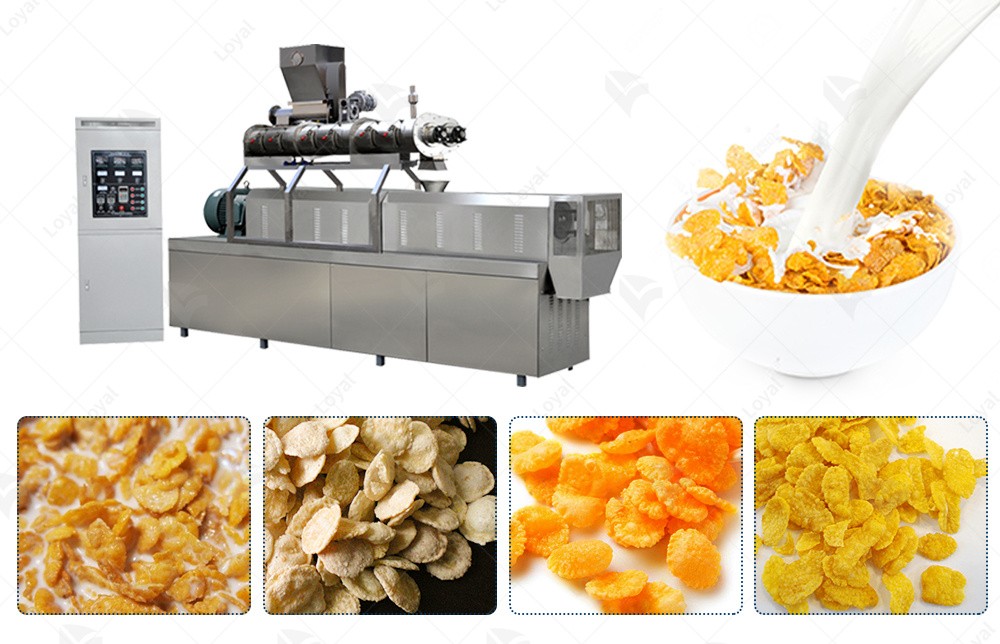
Benefits and Advantages
When considering the utilization of small corn flakes machines in your food production processes, it's essential to understand the significant benefits and advantages they offer.
Cost-Effectiveness:
Investing in a small corn flakes machine can significantly reduce production costs compared to larger-scale equipment. These machines are designed to be efficient and economical, allowing businesses to produce high-quality corn flakes without breaking the bank. The initial investment is typically lower, making it accessible to small and medium-sized enterprises looking to enter the snack food market.
Flexibility and Versatility:
One of the key advantages of small corn flakes machines is their flexibility and versatility. These machines can accommodate various recipes, allowing producers to experiment with different flavors, shapes, and sizes of corn flakes. Whether you're looking to offer traditional corn flakes or innovative, customized options, a small corn flakes machine can adapt to your production needs, catering to diverse consumer preferences.
Efficiency and Productivity:
Despite their compact size, small corn flakes machines are highly efficient and productive. They are designed to maximize output while minimizing wastage, ensuring optimal use of raw materials and resources. With features such as automated controls and precise processing parameters, these machines streamline production processes, allowing for consistent and reliable output. This efficiency translates to higher productivity and profitability for businesses operating in the snack food industry.
Quality and Consistency:
Maintaining product quality and consistency is paramount in the food industry, and small corn flakes machines excel in delivering both. These machines are engineered to produce uniform corn flakes with consistent texture, flavor, and appearance batch after batch. With advanced technologies and precise manufacturing processes, they ensure that every corn flake meets the highest standards of quality, satisfying consumer expectations and building brand reputation.
Accessibility and Scalability:
For businesses looking to start or expand their snack food production operations, small corn flakes machines offer accessibility and scalability. Their compact size and modular design make them suitable for small-scale production facilities with limited space. Additionally, as demand grows, businesses can easily scale up their production capacity by adding more machines or upgrading existing ones, ensuring seamless expansion without significant disruptions.
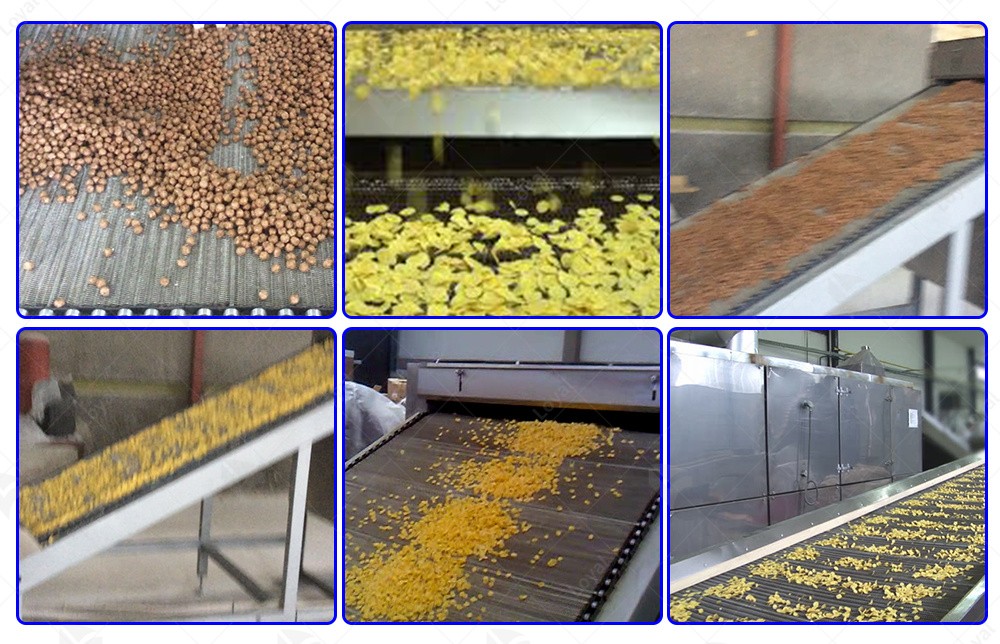
Small Corn Flakes Machine with Advanced Technology
In 2024, the landscape of small corn flakes machines is marked by significant advancements in technology, revolutionizing the way corn flakes are produced on a smaller scale.
Advanced Extrusion Technology: One of the key features of small corn flakes machines is their utilization of advanced extrusion technology. These machines are equipped with precision extruders that allow for precise control over the shaping and cooking of the corn dough. The extrusion process ensures uniformity in texture and consistency, resulting in high-quality corn flakes.
Automated Mixing and Ingredient Dispensing: Small corn flakes machines in 2024 come with automated mixing and ingredient dispensing systems. These systems accurately measure and dispense the necessary ingredients, including corn flour, water, sugar, and flavorings, ensuring consistency in flavor and nutritional content. The automation of these processes reduces the margin for error and enhances efficiency in production.
Integrated Drying and Toasting Systems: To achieve the desired crispness and golden brown color of corn flakes, modern small corn flakes machines are equipped with integrated drying and toasting systems. These systems utilize advanced heating technologies to efficiently dry and toast the corn flakes, enhancing their flavor and texture. Additionally, the integrated design minimizes production space requirements, making these machines suitable for small-scale operations.
User-Friendly Interface and Controls: Another notable feature of small corn flakes machines in 2024 is their user-friendly interface and controls. Manufacturers have prioritized intuitive design and easy operation, allowing operators to efficiently manage and monitor the production process. Advanced touchscreen interfaces provide real-time feedback on production parameters, facilitating adjustments and optimizations as needed.
Compact Design for Space Efficiency: Despite incorporating advanced technology, small corn flakes machines are designed to be compact and space-efficient. Manufacturers have optimized the layout and footprint of these machines to maximize production capacity while minimizing floor space requirements. This makes them ideal for small food production facilities or businesses with limited space.
In conclusion, small corn flakes machines in 2024 combine advanced technology with user-friendly design to deliver efficient and high-quality corn flakes production on a smaller scale. With features such as advanced extrusion technology, automated ingredient dispensing, integrated drying and toasting systems, user-friendly interfaces, and compact design, these machines offer an optimal solution for small food businesses looking to enter the corn flakes market.
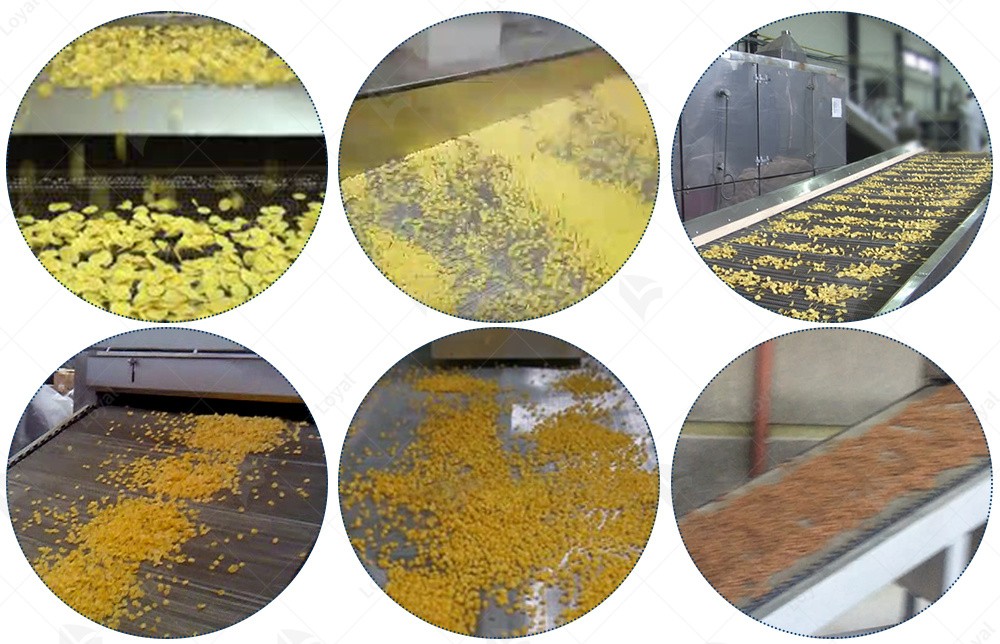
Work Flow of Corn Snacks
1. Raw Material Preparation:
The work flow of corn snacks begins with the careful selection and processing of high-quality corn flour. This finely ground cornmeal serves as the primary ingredient for creating the base mixture used in snack production.
Manufacturers prioritize the sourcing of premium corn flour to ensure consistent taste and texture in the final product. Rigorous quality control measures are implemented to assess factors such as moisture content, particle size, and purity.
2. Mixing and Flavoring:
Once the corn flour is prepared, it is mixed with water and other ingredients to form a dough-like consistency. This mixture serves as the foundation for the creation of various corn snack shapes and textures.
The versatility of corn snack machines allows for the incorporation of a wide range of flavors and seasonings. From classic salted varieties to more adventurous options like cheese, barbecue, or chili, manufacturers can customize the flavor profile to cater to diverse consumer preferences.
3. Extrusion and Shaping:
The prepared dough is then fed into the extrusion chamber of the corn snack machine, where it undergoes high pressure and temperature to transform into its desired form.
Specialized dies and molds are used to shape the extruded dough into familiar corn snack shapes, such as curls, twists, or rings. Precision engineering ensures consistent sizing and texture throughout the production process.
4. Frying or Baking:
After shaping, the corn snacks enter the cooking stage, where they are either fried in oil or baked in an oven. This step is crucial for achieving the signature crunchiness and golden brown color associated with corn snacks.
Manufacturers carefully control cooking time and temperature to ensure uniformity and avoid overcooking or burning. Advanced corn snack machines feature precise temperature control and monitoring systems for optimal results.
5. Seasoning and Packaging:
Once cooked to perfection, the corn snacks undergo a final seasoning process to enhance their flavor profile. This may involve spraying or tumbling the snacks with additional seasoning blends to achieve the desired taste intensity.
Finally, the seasoned corn snacks are carefully packaged into individual servings or bulk containers, ready to be distributed to eager consumers. Packaging materials are chosen to preserve freshness and extend shelf life while maintaining product integrity.
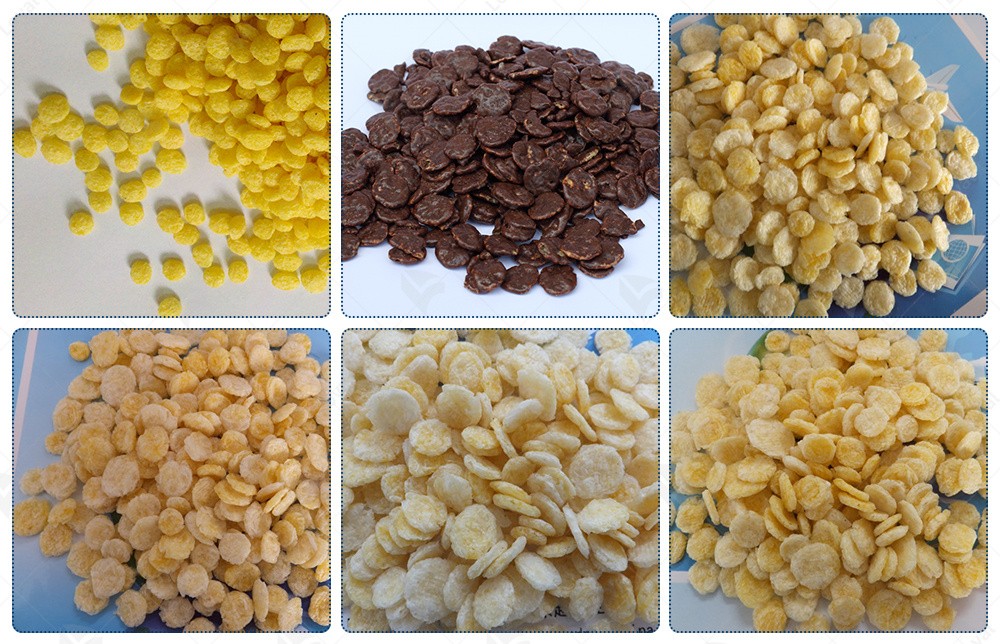
Main features and specifications
|
MODEL |
INSTALLED POWER |
POWER CONSUMPTION |
OUTPUT |
SIZE (LWH) |
|
LY65 |
47kw |
30kw |
180kw/h |
3500X950X1850MM |
|
LY70 |
53kw |
37kw |
200-250kw/h |
3200X760X2000MM |
|
LY75 |
98kw |
75kw |
200-500kw/h |
520011002800MM |
|
LY85 |
99kw |
75kw |
500kw/h |
380011002350MM |
Cost Efficiency and Return on Investment
Investing in a small corn flakes machine entails considerations of cost efficiency and the potential return on investment (ROI). Let's delve into the key factors that contribute to the cost-effectiveness of small corn flakes machines and the expected ROI in 2024.
Cost of Acquisition:
The initial cost of purchasing a small corn flakes machine is a significant factor to consider. While smaller machines may have a lower upfront cost compared to larger industrial-scale equipment, it's essential to evaluate the machine's capabilities and production capacity relative to your business requirements.
Operational Efficiency:
Small corn flakes machines are designed to streamline the production process and minimize resource wastage. Their compact size and efficient operation result in lower energy consumption and reduced raw material usage, contributing to overall cost savings in the long run.
Maintenance and Servicing:
Another aspect influencing cost efficiency is the maintenance and servicing requirements of the small corn flakes machine. Opting for a machine with low maintenance needs and readily available spare parts can reduce downtime and maintenance costs, ensuring continuous operation and maximum productivity.
Labor Costs:
Small corn flakes machines are often designed for ease of operation, requiring minimal manual labor to oversee production. This reduces labor costs associated with operating and monitoring the equipment, further enhancing cost efficiency.
Product Quality and Market Demand:
The quality of corn flakes produced by the small corn flakes machine plays a crucial role in determining market demand and consumer acceptance. Investing in a machine that consistently delivers high-quality products can lead to increased sales and profitability, ultimately maximizing ROI.
Return on Investment:
The ROI of a small corn flakes machine is influenced by factors such as production capacity, market demand, and operational efficiency. By carefully analyzing these variables and selecting a machine that aligns with your business goals, you can achieve a favorable ROI within a reasonable timeframe.
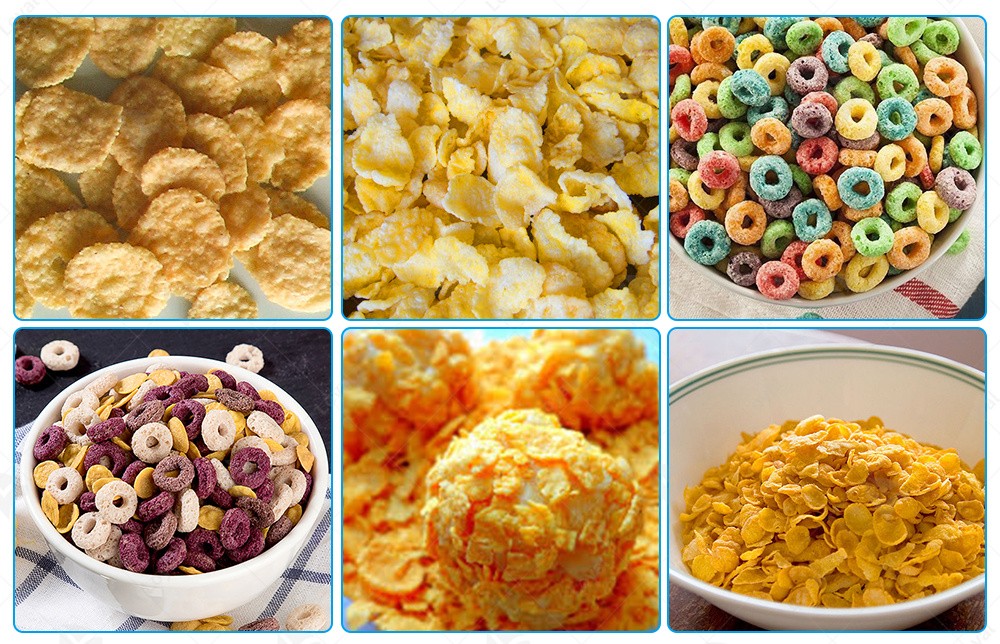
Maintenance and Maintenance
Maintaining a small corn flakes machine is essential for ensuring consistent performance and longevity. Let's delve into the key aspects of maintenance to keep your machine running smoothly in 2024 and beyond.
Regular Cleaning:
Regular cleaning of your small corn flakes machine is crucial for preventing buildup and ensuring hygienic operation. Clean the machine thoroughly after each use, paying close attention to areas prone to food residue accumulation. Use mild detergents and sanitizers recommended by the manufacturer to avoid damaging sensitive components.
Lubrication of Moving Parts:
Proper lubrication of moving parts is necessary to minimize friction and prevent premature wear. Apply lubricants to bearings, gears, and other moving components according to the manufacturer's specifications. Regular lubrication helps maintain smooth operation and extends the lifespan of your machine.
Inspection and Calibration:
Regular inspection and calibration are vital for identifying potential issues and ensuring accurate performance. Inspect all components of the small corn flakes machine regularly, checking for loose bolts, worn-out parts, and signs of damage. Calibrate sensors and controls to ensure precise processing parameters and consistent product quality.
Replacement of Worn Parts:
Over time, certain parts of your small corn flakes machine may wear out and require replacement. Keep an inventory of spare parts and monitor the condition of critical components such as seals, belts, and blades. Replace worn parts promptly to avoid production disruptions and maintain product quality.
Operator Training:
Proper training of operators is essential for maximizing the efficiency and safety of your small corn flakes machine. Train operators on proper machine operation, maintenance procedures, and safety protocols. Ensure that they understand the importance of regular maintenance and encourage them to report any issues promptly.
Documentation and Record-Keeping:
Maintain detailed records of maintenance activities, including cleaning schedules, lubrication routines, and parts replacement. Documenting maintenance procedures and observations helps track the performance of your small corn flakes machine and identify recurring issues. Use this information to improve maintenance practices and optimize machine performance.
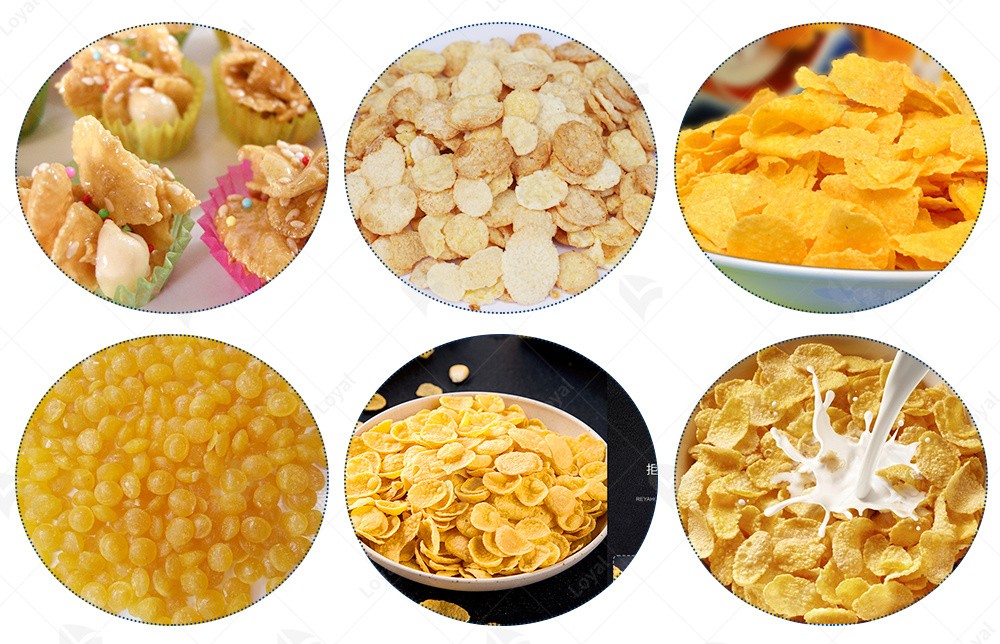
Troubleshooting Tips for Common Problems with Small Corn Flakes Machines
As experts in the field of food processing machinery, it's essential to be prepared for common issues that may arise with small corn flakes machines. Here are some troubleshooting tips to help you address these problems efficiently and keep your production line running smoothly in 2024:
1. Uneven Corn Flake Texture:
If you notice that your corn flakes have an uneven texture, the problem may lie with the extrusion process. Check the consistency of the cornmeal mixture and adjust the moisture content if necessary. Ensure that the extruder is operating at the correct temperature and pressure settings for uniform shaping. Additionally, inspect the die and cutting mechanism for any signs of wear or misalignment that may affect the flake consistency.
2. Excessive Breakage or Crumbling:
Excessive breakage or crumbling of corn flakes can result from improper handling or insufficient moisture during processing. Verify that the rollers and cutting blades are properly adjusted to maintain the desired thickness and shape of the flakes. Increase the moisture content of the cornmeal mixture slightly to improve binding and reduce breakage. Adjust the conveyor speed to minimize impact and abrasion during transportation.
3. Inconsistent Flake Size:
Inconsistent flake size can occur due to variations in ingredient composition or processing parameters. Check the feed rate and extrusion speed to ensure uniform product flow through the machine. Monitor the cutting blades for dullness or damage that may affect flake size. Conduct regular calibration of sensors and control systems to maintain consistency in processing conditions.
4. Equipment Jamming or Clogging:
Equipment jamming or clogging can disrupt production and lead to downtime. Clear any obstructions in the feed hopper, conveyor belts, or extruder to restore smooth operation. Inspect the screens and filters for debris buildup and clean or replace them as needed. Lubricate moving parts regularly to prevent friction and ensure proper function of mechanical components.
5. Electrical or Mechanical Failures:
Electrical or mechanical failures may occur due to wear, fatigue, or electrical malfunctions. Conduct routine inspections of electrical connections, wiring, and control panels to identify any signs of damage or overheating. Test safety features and emergency shutdown systems to ensure they are functioning correctly. Have a qualified technician perform regular maintenance and repairs to address any underlying issues promptly.
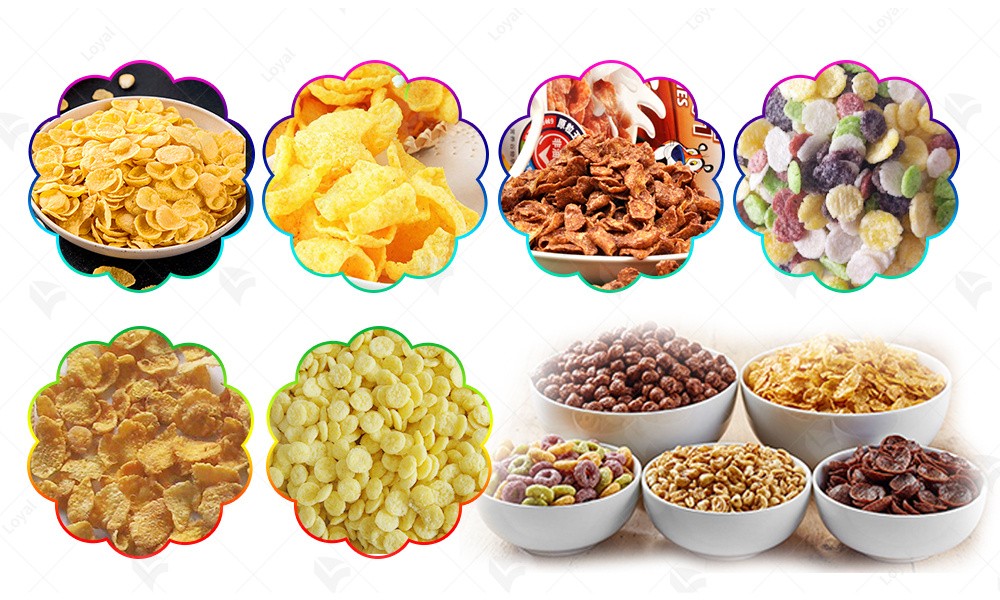
Reference materials
1. Food Engineering Magazine
Website: [https://www.foodengineeringmag.com/]
2. Food Processing Magazine
Website: [https://www.foodprocessing.com/]
3. Institute of Food Technologists (IFT)
Website: [https://www.ift.org/]
4. American Society of Agricultural and Biological Engineers (ASABE)
Website: [https://www.asabe.org/]
5. European Federation of Food Science and Technology (EFFoST)
Website: [https://effost.org/]